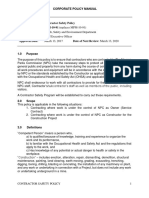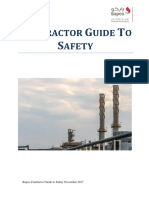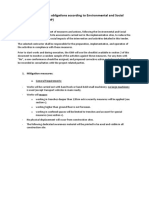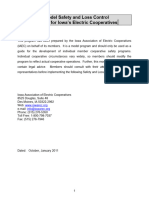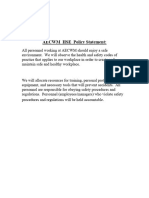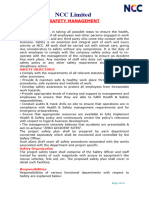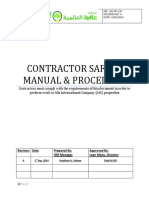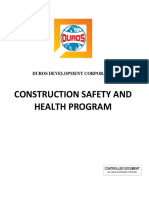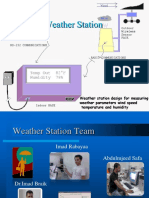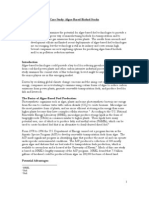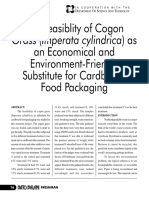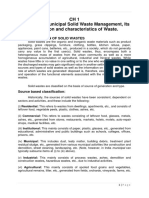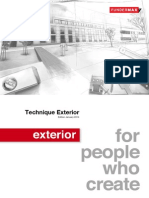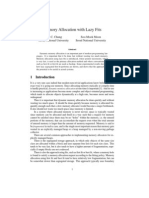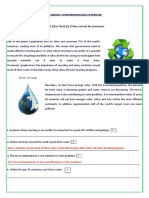0% found this document useful (0 votes)
3 views10 pagesCode of Practice For Code of Practice For
The AGOCO Loss Prevention Manual outlines the loss prevention requirements for contractors working on AGOCO sites, emphasizing the importance of compliance with safety regulations and procedures. It details the responsibilities of contractors, their employees, and the AGOCO Project Engineer, as well as the necessity for proper accident reporting and investigation. The document serves as a comprehensive guide to ensure safe working conditions and prevent loss or accidents during contracted work.
Uploaded by
hamidCopyright
© © All Rights Reserved
We take content rights seriously. If you suspect this is your content, claim it here.
Available Formats
Download as PDF, TXT or read online on Scribd
0% found this document useful (0 votes)
3 views10 pagesCode of Practice For Code of Practice For
The AGOCO Loss Prevention Manual outlines the loss prevention requirements for contractors working on AGOCO sites, emphasizing the importance of compliance with safety regulations and procedures. It details the responsibilities of contractors, their employees, and the AGOCO Project Engineer, as well as the necessity for proper accident reporting and investigation. The document serves as a comprehensive guide to ensure safe working conditions and prevent loss or accidents during contracted work.
Uploaded by
hamidCopyright
© © All Rights Reserved
We take content rights seriously. If you suspect this is your content, claim it here.
Available Formats
Download as PDF, TXT or read online on Scribd
/ 10


